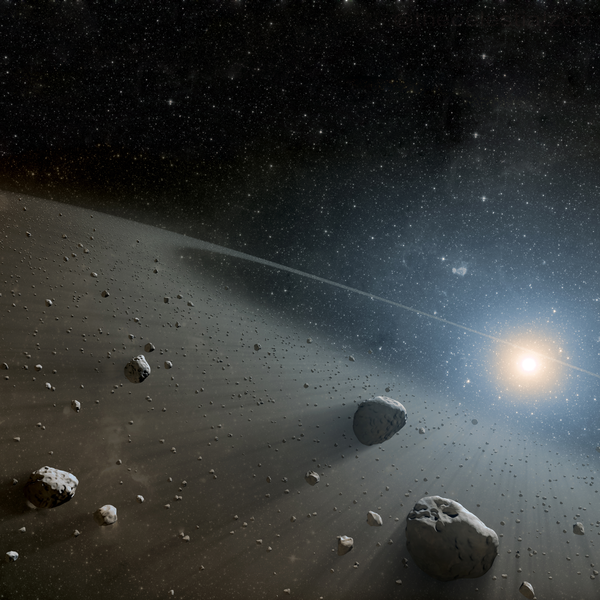The asteroid 2013 BO76 will slam with Earth on Thursday at a speed of 30,000 miles per hour, according to Nasa monitors (50,000 kph).

It's about the same size as the Empire State Building, measuring up to 450 meters wide.
Fortunately, the fast-moving asteroid is projected to go by our planet safely.
Not a Problem
According to statistics from Nasa's Near-Earth Object database, it'll travel by at a safe distance of roughly 3.1 million miles.
That's 13 times the distance between Earth and the Moon, which is a close call in space terms.
Though it presents no threat to our planet, the object has been put to Nasa's list of impending "Close Approaches."
NEOs
Thousands of so-called near-Earth objects (NEOs) are being monitored to offer an early warning if they move closer to our planet.
NEOs are minor things in the solar system (asteroids and short-period comets) with orbits that regularly bring them close to the Earth and are therefore capable of colliding with our planet one day. The term NEO is often used informally to refer to all comets that cross the Earth's orbit (not only short-period comets). Earth-Crossing-Objects are NEOs with orbits that intersect the Earth's orbit (ECOs).
By conservative estimates from space organizations, every space object within 4.65 million miles of us is deemed "possibly harmful."
Passing By
Asteroid 2013 BO76 will pass near to Earth around 10:55 p.m., according to Nasa's Center for Near-Earth Object Studies. It will be noon in the United Kingdom (6:55 p.m. EST).
According to Nasa, it's one of seven space objects slated to make "near approaches" this week.
Fortunately, none of the asteroids tracked by NASA pose a threat to humanity.
Astronomers are presently watching 2,000 asteroids, comets, and other objects that may one day pose a threat to our pale blue dot, with new ones being detected every day.
No Danger So Far

Earth hasn't witnessed an asteroid of this magnitude since the asteroid that wiped off the dinosaurs 66 million years ago.
Smaller things capable of leveling an entire city, on the other hand, collide with Earth regularly.
On June 30, 1908, one a few hundred meters across damaged 800 square kilometers of woodland in Tunguska, Siberia.
No Need to Worry
Fortunately, Nasa believes that none of the NEOs it monitors are on a crash course with Earth.
However, the space agency often revises the expected trajectories of objects, so this might alter in the next months or years.
"There is presently no asteroid or comet on a collision trajectory with Earth," Nasa states, "thus the likelihood of a significant impact is relatively minimal."
"In reality, no major object is expected to impact the Earth in the next few hundred years, as far as we can determine."
Even if an asteroid were to collide with our planet, most asteroids would not end life as we know it.
According to Nasa, "global disasters" are only caused when objects greater than 900 meters collide with Earth.
For more Space news, don't forget to follow Nature World News!
© 2025 NatureWorldNews.com All rights reserved. Do not reproduce without permission.





